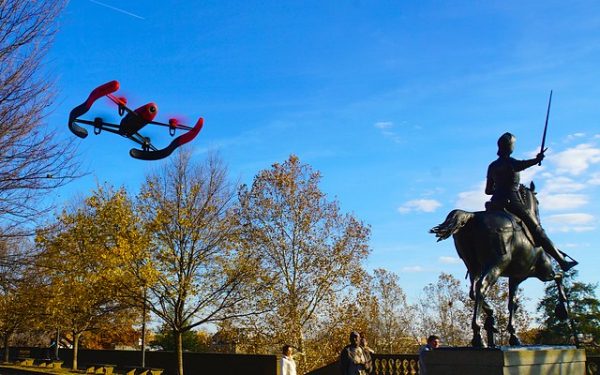
This post was created in collaboration with the Minnesota Journalism Center.
The landscape of journalism is changing every day. The Pew Research Center reported that newspaper newsroom employees declined by 45% between 2008 and 2017, and Nieman Lab argues that newsrooms are in the midst of a “do-or-die moment.” As traditional newsrooms lose hundreds of reporters and editors annually, content creators including WikiLeaks and Deadspin are coming alongside legacy media outlets including CNN, the BBC, and The New York Times to provide information to the public. All of these players publish content online in a journalistic fashion, raising the question of what journalism is as a profession.
In the midst of a shrinking workforce, scholars are starting to pay attention to “interlopers” and “intralopers:” Interlopers are actors or institutions who may consider the work they do to be part of news media, though they do not always define themselves as journalists; web analytics companies are one current example. Intralopers are similar to interlopers, but instead work from within news organizations as specialists in digital and social media and often produce emerging technology meant to complement journalists’ work. Both play increasingly key roles in journalistic spaces.
- Avery E. Holton and Valerie Belair-Gagnon. 2018. “Strangers to the Game? Interlopers, Intralopers, and Shifting News Production.” Media and Communication 6(4): 70–78.
- Scott A. Eldridge, II. 2018. Online Journalism from the Periphery: Interloper Media and the Journalistic Field. London: Routledge.
Machines and software packages are beginning to play a more central role in news gathering, news selection, news writing, news editing, and news distribution in newsrooms worldwide. Drones are one example of machines occupying space traditionally held by journalistic actors. 2016 was a turning point for the institutionalization of drones in newsrooms in the United States, when the Federal Aviation Administration (FAA) amended aviation regulations to allow for widespread experimentation with drones in American journalism. Since that date, journalists from outlets including The New York Times and The Washington Post have produced compelling stories, photos and videos but have also go through a comprehensive federal certification process (Columbia Journalism Review recently wrote about this phenomenon).
- Shangyuan Wu, Edson C. Tandoc Jr., and Charles T. Salmon. 2018. “Journalism Reconfigured.” Journalism Studies: 1–18.
- Astrid Gynnild. 2014. “The Robot Eye Witness.” Digital Journalism 2(3): 334–343.
Analytics and metrics also play a key role in newsrooms nationwide. However, journalists have varying opinions of how influential their role is in their daily routines, with some arguing that analytics challenge journalists’ authority to decide which stories are newsworthy.
- Valerie Belair-Gagnon and Avery E. Holton. 2018. “Boundary Work, Interloper Media, And Analytics In Newsrooms.” Digital Journalism 6(4): 492–508.
- Edson C. Tandoc Jr. 2014. “Journalism is Twerking? How Web Analytics is Changing the Process of Gatekeeping.” New Media & Society 16(4): 559–575.
- Rodrigo Zamith. 2018. “Quantified Audiences in News Production.” Digital Journalism 6(4): 418–435.
Beyond analytics and metrics, journalists and technologists often collaborate with each other on a regular basis to create open-source software programs. One example is “hackathons” — events where coders and journalists come together to find solutions to journalistic problems in the interest of creating a brighter future for news outlets worldwide.
- Jan Lauren Boyles. 2017. “Laboratories for News? Experimenting with Journalism Hackathons.” Journalism: 1–17.
- Seth C. Lewis and Nikki Usher. 2014. “Code, Collaboration, And The Future Of Journalism.” Digital Journalism 2(3): 383–393.

Comments